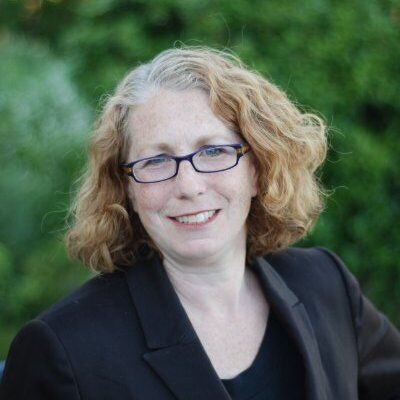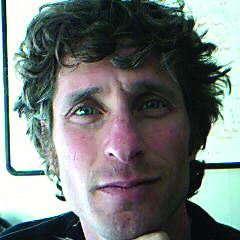Self-Help Credit Union was founded in 1980 as a not-for-profitcommunity development lender, real estate developer and creditunion that serves communities that are traditionally underserved byconventional markets – making its recent green lending initiativesa natural fit.
|Within 15 years of its founding, the $715 million, Durham,N.C.-based credit union began an aggressive, multi-pronged strategydesigned to foster sustainability on a number of fronts. Its firststep was to introduce internal processes designed to encouragesustainability and energy savings in its own facilities and totrack energy usage.
|Its second initiative was to introduce multiple direct loanproducts designed to provide funding for sustainable projects. Inthe mid- to late 1990s, the credit union began offering these loansprimarily to recycling businesses, but soon expanded the program toinclude loans to other types of green businesses, buildings andnonprofits.
|The program has been paying off. To date, the credit union hasmade $298 million in green loans, which includes $138 million forenergy efficient buildings and homes; $127 million for renewableenergy projects, primarily solar; and $15 million for recyclingbusinesses.
| Continuing to moveforward, the credit union created an Environmental StewardshipCommittee in 2005, and then hired Melissa Malkin-Weber in 2011 asits first-ever sustainability director.
Continuing to moveforward, the credit union created an Environmental StewardshipCommittee in 2005, and then hired Melissa Malkin-Weber in 2011 asits first-ever sustainability director.
One of the credit union's most aggressive and successfulinitiatives has been working with the U.S. Department ofAgriculture and its Rural Energy for America Program, whichprovides renewable energy system and energy efficiency improvementloans and grants. Largely as a result of Self-Help's active solarfarm lending program, the USDA's state office in Raleigh issued theagency's highest number of renewable energy loan guaranteesnationwide. Malkin-Weber noted Self-Help is the largest lender inthe country for the USDA's Rural Energy for America Program.
|Rebecca Rogers, assistant general counsel and renewable energyloan officer for the credit union, said she is constantly seekingopportunities to provide financing for solar farms in rural areasacross the state.
|“We have been instrumental in helping a number of local solardevelopers grow their businesses,” she said. “The state has alsohad a huge increase in solar installations due largely to some veryforward-thinking policies and practices in the state.”
|While the majority of Self-Help's renewable energy project loanshave been for solar projects (which are considered front and centerin the state), it continues to push into other types of renewableprojects. “For several years, for example, we have been involved inone-off projects that involve biomass, combined heat and power,wind and hydro,” Rogers said.
||The credit union has also continued to expand its direct loaninitiatives.
|“We have a loan product for homeowners who want to installsolar,” Malkin-Weber said. “We have also partnered with non-profitprograms in six counties in the state that are advancing a groupbuying models for solar. This year, we are really refining thisproduct and talking to installers about it.”
|In addition, the credit union has established a partnership withRoanoke Electric Cooperative, a local utility company thatpioneered on-bill repayment for energy loans in the state.
|“We are partnering with them to provide loans to customers thatthey can't serve through their own program,” Malkin-Weber said.
| While Self-Help has been active in direct loans forrenewable projects over the past 20-plus years, it has also becomeinvolved in the indirect side. One of its first forays into thismarket involved partnering with RSF Social Finance.
While Self-Help has been active in direct loans forrenewable projects over the past 20-plus years, it has also becomeinvolved in the indirect side. One of its first forays into thismarket involved partnering with RSF Social Finance.
|
“RSF is a fellow mission-oriented lender that we had known overthe years,” Brian Schneiderman, vice president and director ofcommercial lending for Self-Help, said.
|In one instance, RSF was given an eco-lodge development projectin Yosemite National Park, which turned out to be too large for thelender.
|“RSF referred it to us because of our capacity,” he said. “Wewere able to originate the loan and participate part of it withthem.”
|Self-Help then became involved in another partnership. Craft3, apeer community development financial institution, has been servingOregon and parts of Washington since 2009 by providing homeenergy-efficient loans in partnership with a nonprofit calledEnhabit. The program allows homeowners to finance energy efficientupgrades, such as insulation, duct sealing, high-efficient heat andhot water – projects that are designed to reduce homeowner energyuse by an average of 15% annually.
|The key innovative attribute of this program is that it allowshomeowners to access financing without putting any money down.Rather, they repay their loans through their regular utility bills,a mechanism known as on-bill repayment. This expands access tocredit for energy efficient projects by eliminating the up front,out-of-pocket costs that often make upgrades unaffordable. OBR alsoallows Craft3 to review a homeowner's utility bill payment historyas a factor in loan qualification.
|| The program also includesa workforce agreement with participating contractors that helpsbuild expertise in energy efficiency among minority- andwomen-owned businesses.
The program also includesa workforce agreement with participating contractors that helpsbuild expertise in energy efficiency among minority- andwomen-owned businesses.
The program became so popular that, within a few years, demandfor loans had grown beyond Craft3's capacity. Craft3 approachedSelf-Help in 2012 with a groundbreaking proposition: Would thecredit union be willing to help establish a secondary market forCraft3's energy efficient loans? That is, Craft3 wanted to sell itsloans in order to recycle capital and make more loans with theproceeds from the sale.
|“The way they heard of us is because I used to work for theirformer parent company,” Schneiderman said. “They had been trying tofind a bank to buy their portfolio for about a year. When Ihappened to meet them at a conference, we started talking.”
|While the concept was new and untested, Self-Help jumped at thechance.
|“The reasons were that we had some liquidity, and we also wantedto get involved in these kinds of projects,” Schneiderman said.
|In 2013, Self-Help purchased a $15.7 million OBR portfolio fromCraft3.
|“Craft3 is the equivalent of our servicer, so, while wepurchased the portfolio, they play the servicing role,”Schneiderman said. “They receive customer payments from theutilities, and then pay us on those accounts.”
|So far, the program has been working. Homeowners are paying backtheir loans on time and seeing significant savings, and localcontractors are building skills in the green sector. The historictotal loan loss is less than 1%.
|In fact, the program has been working so well that, in 2015,Self-Help purchased an additional $6.4 million in OBR loans fromCraft3.
| “This second saleis more strong evidence that OBR loans perform extremely well whileproviding homeowners affordable, inclusive, energy-efficiencyfinancing,” John Berdes, president for Craft3, said. “Our hope isto provide OBR loans as a model for expanding access to energyefficiency and for these secondary market sales to increaseliquidity for these loans.”
“This second saleis more strong evidence that OBR loans perform extremely well whileproviding homeowners affordable, inclusive, energy-efficiencyfinancing,” John Berdes, president for Craft3, said. “Our hope isto provide OBR loans as a model for expanding access to energyefficiency and for these secondary market sales to increaseliquidity for these loans.”
Schneiderman added, “After all of the work on the first purchasebalancing Craft3's OBR innovations, while creating a viablesecondary market transaction for such products, this second deal isall the more gratifying. The affordability of energy-efficiencyimprovements like high-efficiency furnaces has been a real barrierfor many families. Helping prove OBR programs can expand energyefficiency to families of modest means is a huge leap forward.”
|While Self-Help doesn't currently have any additional portfoliosin the discussion stage, it hopes to do more with Craft3 in thefuture.
|“We are also looking for additional opportunities beyond this,”Schneiderman said.
Complete your profile to continue reading and get FREE access to CUTimes.com, part of your ALM digital membership.
Your access to unlimited CUTimes.com content isn’t changing.
Once you are an ALM digital member, you’ll receive:
- Critical CUTimes.com information including comprehensive product and service provider listings via the Marketplace Directory, CU Careers, resources from industry leaders, webcasts, and breaking news, analysis and more with our informative Newsletters.
- Exclusive discounts on ALM and CU Times events.
- Access to other award-winning ALM websites including Law.com and GlobeSt.com.
Already have an account? Sign In
© 2024 ALM Global, LLC, All Rights Reserved. Request academic re-use from www.copyright.com. All other uses, submit a request to [email protected]. For more information visit Asset & Logo Licensing.









